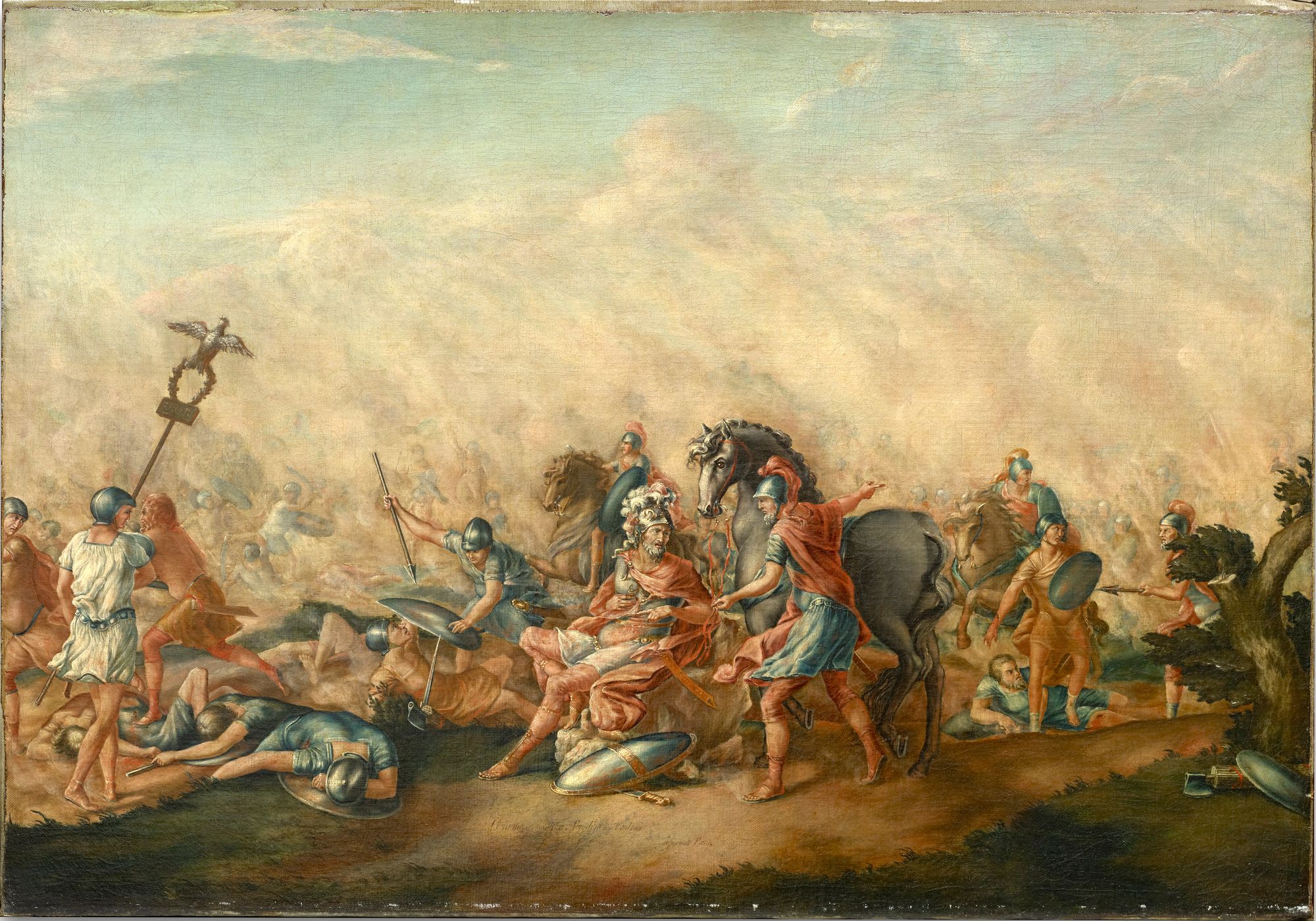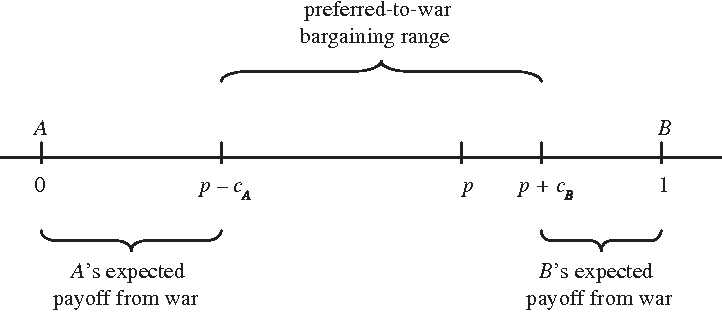
War - what is it, and what causes it to happen? As war is a deadly and destructive endeavour, the puzzle of why humans choose to engage in warfare remains one of the most pressing questions of social science. Indeed, if we want peace, we first have to figure out the causes of war.
Defining War
According to Jack Levy & William Thompson (2010) war can be defined as sustained, coordiated violence between organized actors. It might sound obvious, but crucial to the definition of war is that it is violent. This seperates war from other types of competative social behavior. Moreover, warfare is not random, it is often coordinated by some organized actors that have motives and goals, making them political in nature. The Prussian general Carl Von Clausewitz (1832) famously purposed that "war is continuation of politics by other means." With this Clausewitz pointed out that when a debate or bargaining process over some political good does not yield a satisfactory result, then the fighting begins.
Perspectives on War
There are many perspectives on what causes war to happen. Kenneth Waltz (1959), in his pioneering book Man, the State, and War introduced three different levels of analysis that he calls "images." This typology allows us to understand the three most common focal points of conflict researchers.
- First image: Individuals. These researchers focus on the characteristics of political leaders as a cause of war (like Napoleon or Saddam Hussein) or by adressing the characteristics of human nature more generally.
- Second image: States/Institutions. These researchers adress the domestic makeup of states as the primary causes of war, such as whether democratic or authoritarian institutions affect the probabilities of a state engaging in war.
- Third image: The international system/Systems. These researchers primarily argue that the cause of war is found at the systemic level: That it is the structure of the interaction of states that drive them to enage in warfare. This has posited researchers such as Waltz (1979) to suggest that it is the anarchic structure of the international system that causes war, as there is no higher authority that can effectively prevent one state from fighting another.
Contemporary Perspectives
Following the second world war, research on war was dominated by a focus on systemic factors. However, in the 1990s, various conflict researchers adopted game theoretic perspectives on social behavior through which they sought to question and nuance previously posited theory. While the anarchic explanation of war posited by Waltz (1979) and others had set the benchmark of theoretical developments for a couple of decades, it had failed to explain one of the most central puzzles of war: If wars are so costly, why do states still choose to enage in warfare compared to bargaining?
In an attempt to explain this, James Fearon (1995) presented one of the most promising contemporary explanations for war, often reffered to as the bargaining theory of war.

The starting point of bargaining theory is that war is a costly endeavor and a primarily inefficient way to solve disputes. This is because war destroys resources that might have been distributed among adversaries. Therefore, for rational actors, a settlement based on the likely outcome of a war is much preferred than the war itself, because it would give each adversary the same outcome they would expect from a war without the actual human and economic cost of fighting it.
So, what then would drive rational actors to engage in warfare instead of striking a deal? Fearon suggests three general mechanisms that cause rational actors to go to war:
- Lack of information. If one side has private information about its military capabilities, strategies or economic/technological capacity that the other side does not know about, then the two sides calculus about the outcome of the war will be different, hence rendering their estimates of bargaining power inaccurate. Fearon also points out that actors have incentives to exaggerate their bargaining power by keeping information private (by bluffing). Indeed, if a state realizes that it is relatively weaker, it has little incentive to reveal its real capabilities as that would lower its bargaining power. Even worse, revealing information could tempt the adversary the to use force if it knows that it has relatively more bargaining power.
- Commitment problems. Promises and commitments cannot be credible in situations where the relative distribution of power between the two adversaries is experiencing a shift. For example, the state that is weaker (but growing in bargaing power) has incentives to strike a bargain, while the powerful relatively declining state, does not have incentives to do so. How does the the powerful state know that the weaker state will follow the agreement if it will be in a stronger bargaining position in the future? If there is no authority that can enforce the agreement between actors, then actors in such situations will have commitment problems.
- Indivisible issues. Lastly, Fearon purposes that some issues cannot be bargained over or divided like territory. Due to their nature, these issues are indivisble (such as identity, religion etc.). If actors believe that a certain good cannot be divided but only controlled in its entirety by themselves, then they may consider going to war. However, Fearon is also sceptical to the notion that some things are inherently indivisble, and purposes that side payments, or bargaining across a wider specturum of issues might facilitate a solution.
Bargaining theory offers a powerful overarching explanation for why wars occurs which allows us to understand severval aspects of the in the dynamics of war and peace that previously were left unexplained (why balanced states are more likely to fight; why things that reduce uncertainty such as trade, communication and international organizations might reduce war; why preventative war sometimes is rational; why there often is a longer period of post-war peace). Yet, a caveat to bargaining theory, which Fearon also acknowledges, is that it does not take into consideration the personality of leaders or different psychological biases.

However, the last two decades research on conflict has increasingly sought to systematize these first- and second "image" perspectives. This new research on the role of leaders and institutions showcase how certain attributes increase and decrease the likelihood of war.
For example, in their book Why Leaders Fight, Micheal Horowitz, Allan Stam & Cali Ellis (2015) point out the importance of individual leaders' personality and experiences when it comes to decisions of war & peace. For most historians or psychologists this might seem like an obvious suggestion, but the value of Horowitz et al.'s work is the lenghts to which they have sought to systematize the attributes of leaders. Together they present the Leader Experience and Attribute Descriptions (LEAD) dataset, which contains data on over 2000 state leaders from 1875-2004 covering a myarid of experiences and personal characteristics. Using the latest psychological theories on behavior in personality, they then set out to test various hypotheses. One of their most interesting findings is that leaders with rebel or military experiences historically have a much higher likelihood of enaging in warfare than others.

The literature on institutions also offers interesting implications for the study of the causes of war. One of the most puzzling aspects of democracies is that these types of states do not fight wars with other democracies, often referred to as what the philosopher Immanuel Kant (1795) originally called democratic peace. One theorized mechanism of this is peace is that the populations in democracies generate public opinions that constrain leaders from initiating wars against other democracies. Recent studies also find that autocratic institutions form various constraints that make leaders more cautious about going to war. Jessica Weeks (2014) points out that there is signifiact variation in autocratic states, pointing towards militarization and personalization as key risk-factors.

Is War In Decline?
For now I have covered various contemporay perspectives on the causes of war, but what about the prevalence of war? Is war in decline? While war between states have been on the decline since the end of the Korean War (1950-53), this downward trend has been offset by an increase in civil wars (intrastate wars). Today, civil wars make up the majority of the world's conflicts. Yet, the total numbers of battle-deaths have been going down since the aftermath of World War 2, which often has been reffered to as "the long peace."

Some, like Steven Pinker (2011) suggests that this is a relevant downward trend that could be explained by a normative change in human behavior, where enlightenment values have had a pacifying effect. Others, like Kenneth Waltz (1990) point to the advent of nuclear weapons, which has hightened the risk and gains from engaging in great power war. Branhart et al. (2020) have suggested that womens more dominant role in political institutions have had a pacifying effcet on the relationship between states. The increase in trade and commerical ties following World War 2 are also theorized to have had a significant impact. Erik Garzke (2007) suggest that ties between capitalist elites have heightend the oppurtunity cost of war. Lastly, a growing body of emperical research supports the notion that democracies have had significant pacifying effect on international relations. Collectively all these factors have probably had more or less of an impact, but does that mean that war is becoming something of the past?
Bear Braumoeller (2019) is sceptical to the "decline-in-war-thesis" and uses change point analysis to demonstate that the current 70 year "long peace" following World War 2 might not be statistically significant. According to Braumoeller's model, the likelihood of the 21st century exeriencing a new world war is 27%, while the likelihood for keeping the peace is only 24%. Braumoeller points to international order, usually maintained by the dominant power in the international system, as the key mechanism keeping the current peace. Therefore, according to Braumoeller, war is in decline because the major powers have ordered their affairs in ways that make war less likely.
